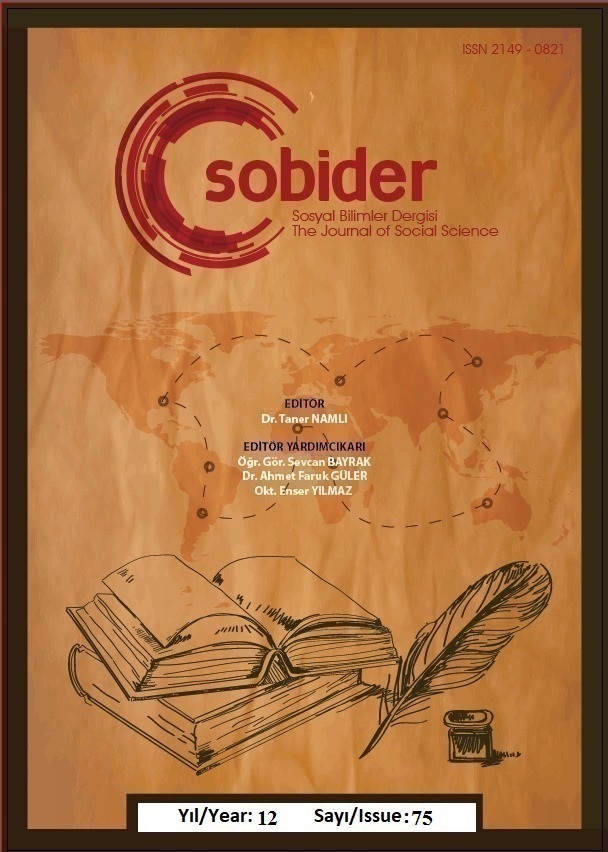TARİHİ ESER RESTORASYONLARINDA FOTOGRAMETRİ YÖNTEMLERİ KULLANILARAK 3 BOYUTLU YAZICILAR İLE ASLINA UYGUN YAPI ELEMANLARININ OLUŞTURULMASI
Author :
Abstract
Bu çalışma, gelecekle ilgili endişeleri olan bireylerin, toplumların ve ulusların geçmişle bağlantılı olduğunu vurgulayarak kültürel mirasa olan önemi ele almaktadır. Kültürel mirasın öğrenme ve kavrama sürecinde nasıl edinildiği üzerine odaklanarak, bireyin bilincini yenilemenin kültürel mirasa sahip çıkma ile doğrudan ilişkili olduğunu belirtmektedir. Projemiz, tarihi eser restorasyon uygulamalarında kullanılması amaçlanan alternatif bir yöntem geliştirmeyi amaçlamaktadır. Geleneksel restorasyon yöntemlerinin maliyet ve zaman açısından zorlayıcı olması, günümüz teknolojilerinin kullanılması ile daha etkili, hızlı ve ekonomik bir yenileme yöntemi geliştirme ihtiyacını ortaya çıkarmıştır. Restorasyon sürecinde, hasarlı eserin belirlenen bölümü, fotogrametri uygulamaları kullanılarak 3 boyutlu bir ortama aktarılmıştır. Bu adımda, farklı açılardan çekilen fotoğrafların programın detaylı sonuç üretebilmesi için yeterli sayıda veri içermesi önem arz etmektedir. Bu amaçla, "Agisoft Metashape" programı kullanılarak çevre ve eserin 3 boyutlu modeli elde edilmiştir. Araştırmalar sonucunda, restorasyon için polilaktik asit (PLA) türü bir filamentin kullanılmasına karar verilmiştir. Restorasyon parçasının fiziksel görünümünü en yakın haline getirmek için ham maddelerin toz haline getirilip filamente aktarılması planlanmıştır. Prototipler için ise elde etmenin kolaylığı nedeniyle alçı tozu tercih edilmiştir. Bu çalışma, kültürel mirasa duyulan önemi vurgulayarak, tarih eser restorasyonunda kullanılacak yeni bir yöntemin tasarımını ve uygulanabilirliğini sunmaktadır.
Keywords
Abstract
This study addresses the importance of cultural heritage by emphasizing that individuals, societies, and nations with concerns about the future are connected to the past. By focusing on how cultural heritage is acquired in the process of learning and understanding, it highlights that renewing an individual's consciousness is directly related to preserving cultural heritage. Our project aims to develop an alternative method intended to be used in historical artifact restoration practices. The cost and time restrictions of traditional restoration methods have revealed the need to develop a more effective, faster, and economical restoration method using today's technologies. In the restoration process, the damaged part of the artifact was transferred to a 3D environment using photogrammetry applications. At this step, it is important that the photos taken from different angles contain enough data for the program to produce detailed results. For this purpose, the "Agisoft Metashape" program was used to obtain a 3D model of the environment and the artifact. After hours of research, it was decided to use polylactic acid (PLA) filament for restoration. To bring the physical appearance of the restoration piece as close as possible to the original; the method was to grind the original material into a powder-like form, then injecting the material to the filament. For the prototypes, plaster powder was preferred due to its ease of obtaining. This study emphasizes the importance of cultural heritage and presents the design and feasibility of a new method to be used in historical artifact restoration.





